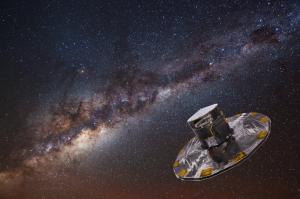Science
MASCOT confirms what scientists have long suspected

Investigated region on Ryugu.
- Read more
- 270 reads
Want to Colonize Mars? Aerogel Could Help
Raising crops on Mars is far easier in science fiction than it will be in real life: The Red Planet is an inhospitable world. Among other challenges, subzero temperatures mean water can persist on the surface only as ice, and the planet's atmosphere offers little protection to plants (or people) from the Sun's radiation.
- Read more
- 276 reads
Hubble Peers at Galactic Cherry Blossoms

Hubble Peers at Galactic Cherry Blossoms
- Read more
- 268 reads
Wildfire Sparks in Sugarcane Fields on the Island of Maui

Wildfire Sparks in Sugarcane Fields on the Island of Maui
- Read more
- 262 reads
Holes in the Universe sharpen cosmic measurements

The change in the average shape of voids caused by Doppler distortions and the effects of dark energy and curvature.
- Read more
- 271 reads
A Rover Pit Stop at JPL

A team of engineers at NASA's Jet Propulsion Laboratory in Pasadena, California, install the legs and wheels - otherwise known as the mobility suspension - on the Mars 2020 rover. The imagery for this accelerated time-lapse was taken on June 13, 2019, from a camera above the Spacecraft Assembly Facility's High Bay 1 clean room.
- Read more
- 259 reads
HiRISE Spots Curiosity Rover at Mars' 'Woodland Bay'

NASA's Curiosity Mars rover can be seen in this image taken from space on May 31, 2019, by the HiRISE camera aboard the Mars Reconnaissance Orbiter. In the image, Curiosity appears as a bluish speck.
- Read more
- 283 reads
NASA's Orbiting Carbon Observatory-3 Gets First Data

Preliminary carbon dioxide (CO2) measurements from OCO-3 over the United States.
- Read more
- 240 reads
NASA's AIRS Images Tropical Storm Barry Before Landfall

NASA's AIRS instrument imaged Tropical Storm Barry on the afternoon of July 12, 2019, a day before the storm is expected to make landfall on the Louisiana Coast.
- Read more
- 279 reads
Human Rights
Fostering a More Humane World: The 28th Eurasian Economic Summi

Conscience, Hope, and Action: Keys to Global Peace and Sustainability

Ringing FOWPAL’s Peace Bell for the World:Nobel Peace Prize Laureates’ Visions and Actions

Protecting the World’s Cultural Diversity for a Sustainable Future

Puppet Show I International Friendship Day 2020


